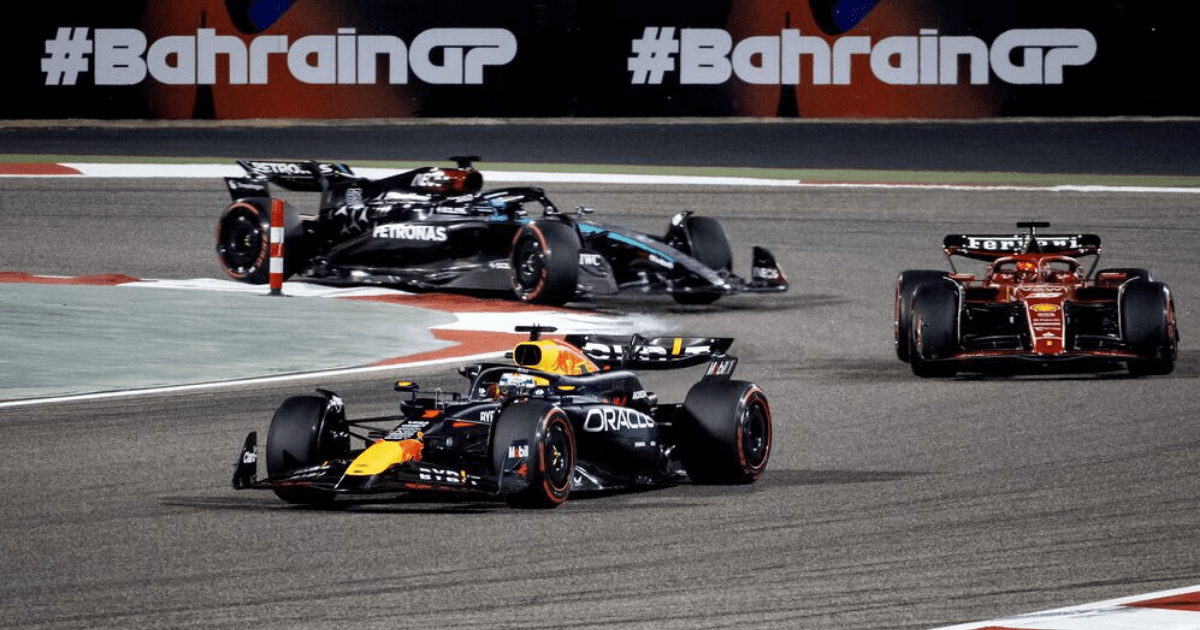Verstappen Dominates the Race
Max Verstappen kicked off his F1 title defense with a stunning win at the Bahrain Grand Prix, finishing a whopping 22 seconds ahead of his teammate Sergio Perez. The 26-year-old driver showcased his dominance from the start of the new season, leaving his competitors trailing far behind.
Support for Under-Fire Christian Horner
Red Bull team principal, Christian Horner, found solace in Verstappen's victory after weeks of controversy. Horner, who had been embroiled in allegations and tensions, was seen smiling and receiving support from his wife, Geri Halliwell, at the race track. Despite previous speculation, Horner's relationship with key figures remained intact, reaffirming his position within the team.
Verstappen's Unstoppable Form
Verstappen's commanding performance at the Bahrain Grand Prix reaffirmed his status as a force to be reckoned with in Formula 1. With a significant lead throughout the race and a bonus point for setting the fastest lap, the Dutch driver's victory sets a high bar for his competitors this season.
Frequently Asked Questions
What materials are used most often in the chassis of Formula 1 cars?
The chassis of a Formula 1 car is primarily constructed from carbon fiber composites. This material has a high strength-toweight-ratio, which offers excellent rigidity at a low weight. Additionally, materials such as aluminum and titanium may be used for specific components, while advanced polymers and honeycomb structures are incorporated for crash absorption and structural efficiency.
What measures are Formula 1 taking to become more sustainable?
Formula 1 is taking several measures to be more sustainable. One of the key initiatives is transitioning to biofuels and aiming for a net-zero carbon footprint by 2030. The sport is working on advanced fuel technologies that reduce greenhouse gasses. The sport is implementing efforts around greener travel and carbon offsets. F1 also works with partners to reduce waste and improve recyclability.
How do F1 strategies depend on technology in different ways?
F1 racing strategy heavily relies on technology. Real-time data analysis and predictive modeling are used, as well as simulation. Teams use a wide range of data to make strategic decisions about pit stops, tire selection, and fuel management. This includes everything from tire performance metrics to forecasts. Advanced software models and machine learning can simulate race situations to create the most effective strategy. Teams then adapt their strategies during the race based on the data they collect and the conditions that are changing.
What type of communication system do F1 teams employ during a race?
F1 teams rely on sophisticated communication systems in order to stay in constant touch with their drivers, race engineers, strategists, and race engineers during a race. The systems use radio communications for voice transmission and telemetry data transmission. Teams use encrypted digital radio systems to ensure secure, clear communication despite the high-noise environment. With these systems, teams are able to make instant decisions and provide drivers crucial information regarding their car performance, race strategies, and competitors status.
Statistics
- Formula 1 engines can rev up to 15,000 RPM, a decrease from the 18,000 RPM limit set prior to the 2014 regulation changes.
- Formula 1 cars can achieve lateral acceleration in excess of 5 g during cornering, which is about five times the force of gravity.
- Formula 1’s research into sustainable fuel aims to create a 100% sustainable fuel for use in F1 engines by the mid-2020s.
- Modern Formula 1 car chassis are required to withstand a frontal crash test with a peak deceleration of no more than 25 g.
- Computational fluid dynamics simulations are capable of calculating around 300 million mesh points to simulate airflow around a Formula 1 car.
- The halo device introduced into Formula 1 in 2018 is designed to withstand the equivalent weight of a London double-decker bus.
- Formula 1 races on average have over 300 sensors on a car, generating more than 1.5 billion data points over a race weekend.
- In 2021, Formula 1 announced its plan to have a net-zero carbon footprint by 2030, which includes the cars, on-track activities, and the rest of the operations.
External Links
formula1.com
renaultsport.com
mercedesamgf1.com
techradar.com
sauber-group.com
f1chronicle.com
wired.co.uk
formula1.com
How To
How to Stay up-to-date with Racing Simulations for F1 Teams
Focus on the use of driving simulators for driver training and vehicle design. Be aware of the latest developments in virtual models and software upgrades to improve simulation accuracy. Keep track of how teams use feedback from drivers to improve the simulator experience. Also, note that strategy planning is increasingly based on simulation, especially for circuits with new or modified layouts.

